This is a series of articles looking at the Minisforum AI X1 Pro running Linux. In this series, I examine every aspect of this Mini PC in detail from a Linux perspective. I’ll compare the machine with desktop PC counterparts along the way.
The Minisforum AI X1 Pro (not an affliate link) is a powerful mini PC based on an AMD Ryzen AI 9 HX 370 with integrated Radeon 890M graphics. This is no ordinary processor and no ordinary integrated GPU. The machine can handle extremely demanding tasks. With 64GB of RAM and 1TB NVMe this configuration retails for £929.
For this article in the series, I’ve run a series of benchmarks on the machine. Most of the tests use the Phoronix Test Suite. Together with the Minisforum AI X1 Pro, I’ve run benchmarks on three other mini PCs (the ASRock NUC Box-255H, Intel NUC 13 Pro, and an Intel N100), together with two desktop machines with 10th and 12th generation Intel processors.
Only the Minisforum machine has an AMD processor. I want to see how the AMD machine fares against Intel processors. Obviously the N100 machine is much cheaper than the others, but it’s included to illustrate the magnitude of the performance improvement the AMD machine offers.
Each machine is tested with the same software and configured to ensure consistency between results. All power management functionality is disabled when running the benchmarks. For the Minisforum machine, I enabled Performance Mode in the Power Limit mode section in the BIOS. Every performance enhancing technique is used e.g. the performance governor is used for all tests, each machine was running with as few processes running as possible (e.g. no X11/Wayland is running except for the graphic benchmarks).
Let’s start with a variety of processor benchmarks.
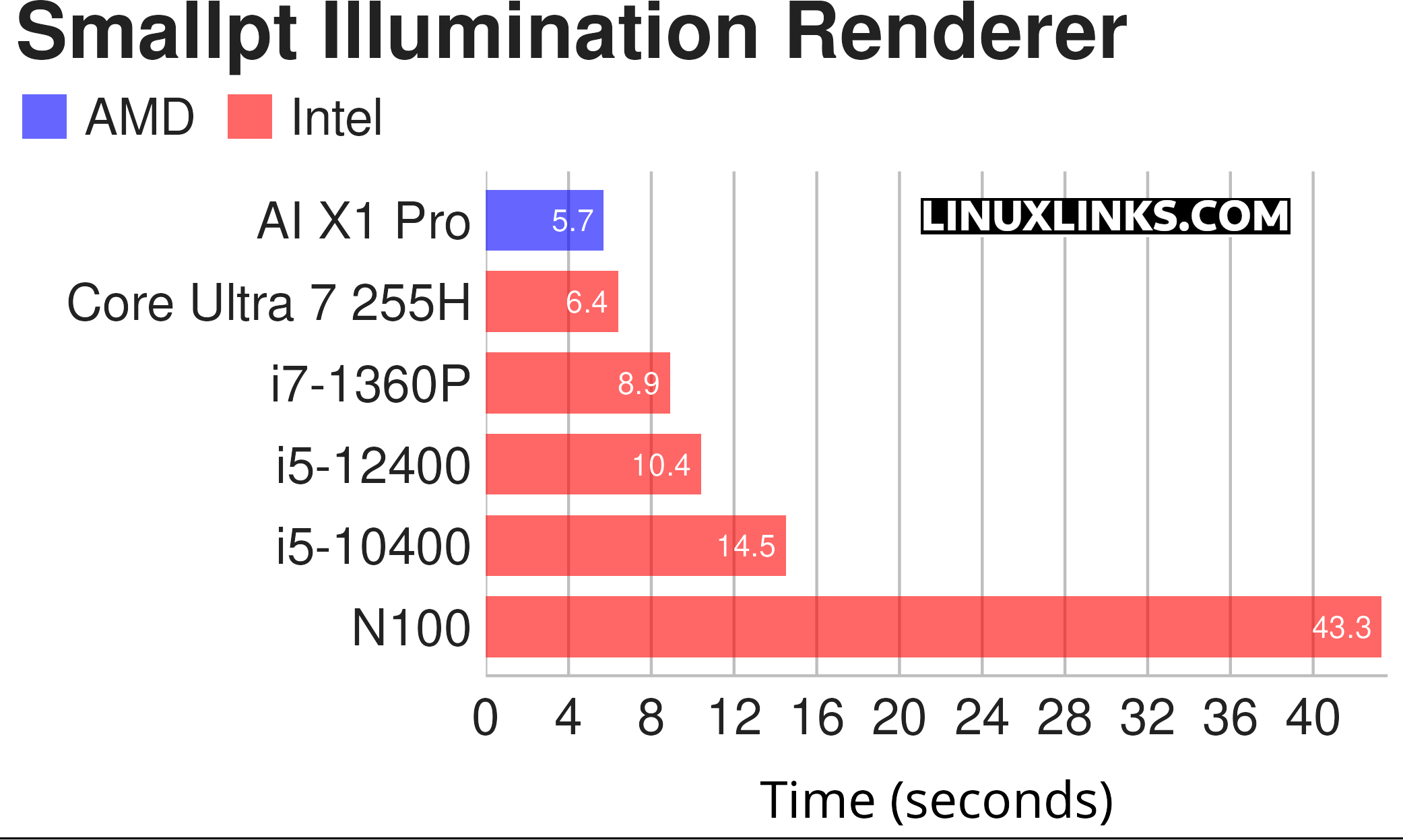
$ phoronix-test-suite benchmark smallpt
Smallpt is a C++ global illumination renderer written in less than 100 lines of code. Global illumination is done via unbiased Monte Carlo path tracing and there is multi-threading support via the OpenMP library. As this benchmark uses all cores, a CPU with many cores complete the test considerably quicker.
The Minisforum machine with its 12 cores (24 threads) processor beats the Core Ultra 7 255H machine with its 16 cores (16 threads) by a fairly modest 10%.
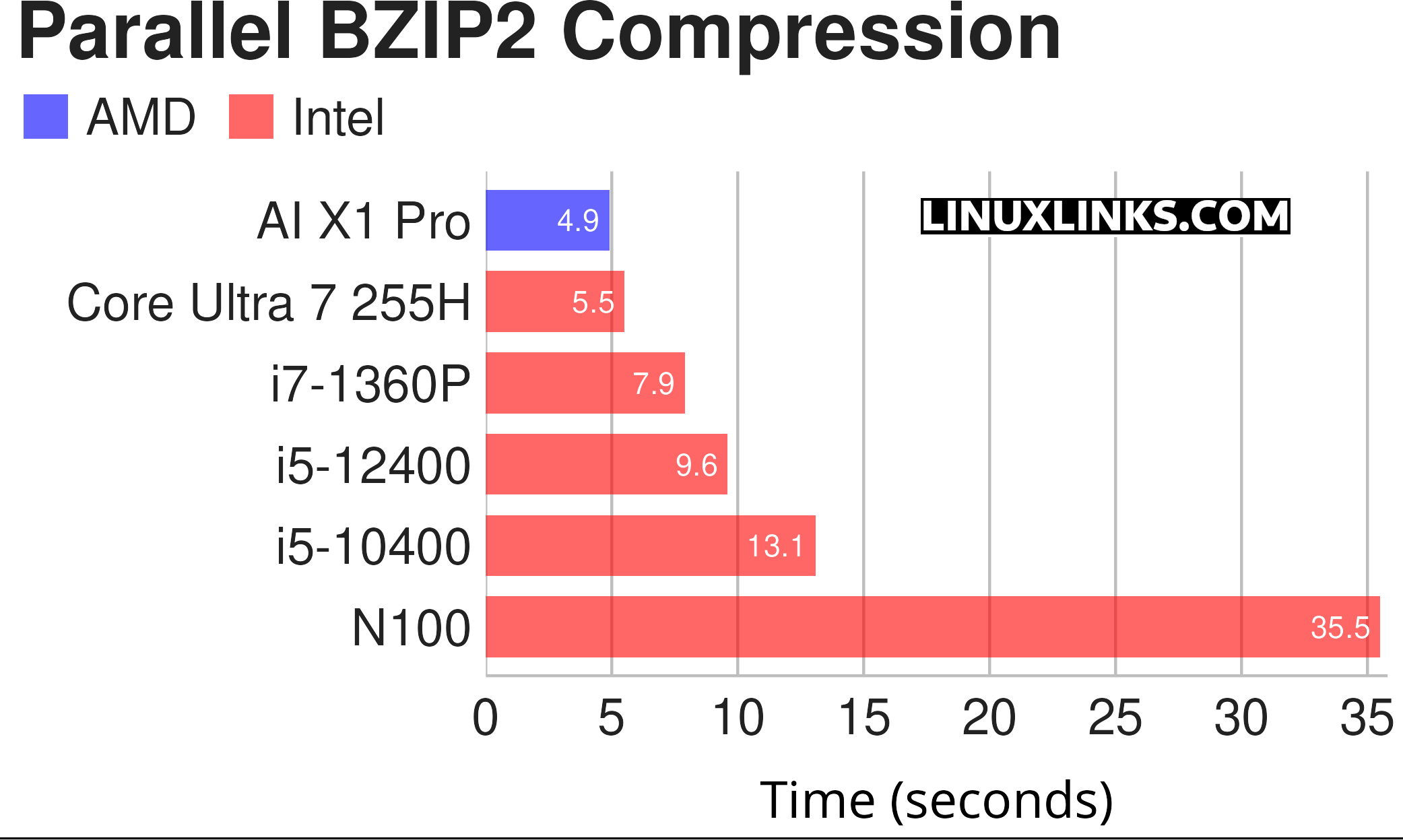
$ phoronix-test-suite benchmark compress-pbzip2
pbzip2 is a parallel implementation of the bzip2 block-sorting file compressor that uses pthreads and achieves near-linear speedup on SMP machines.
This test measures the time needed to compress a file (a .tar package of the Linux kernel source code) using BZIP2 compression. Again this test uses all a machine’s cores.
Again a similar result here, the AI X1 Pro has about a 10% speed advantage over the newer Core Ultra 7 255H CPU.
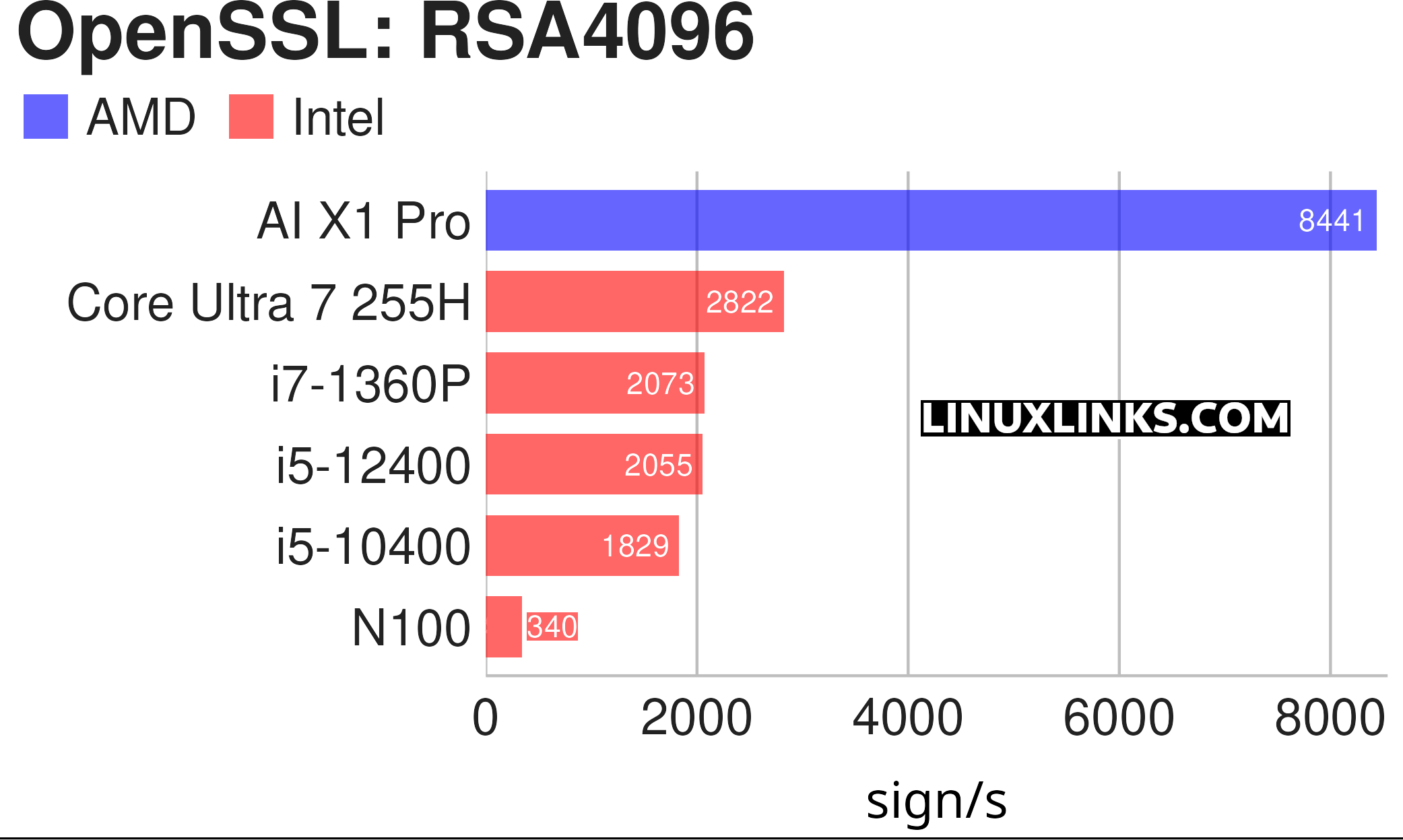
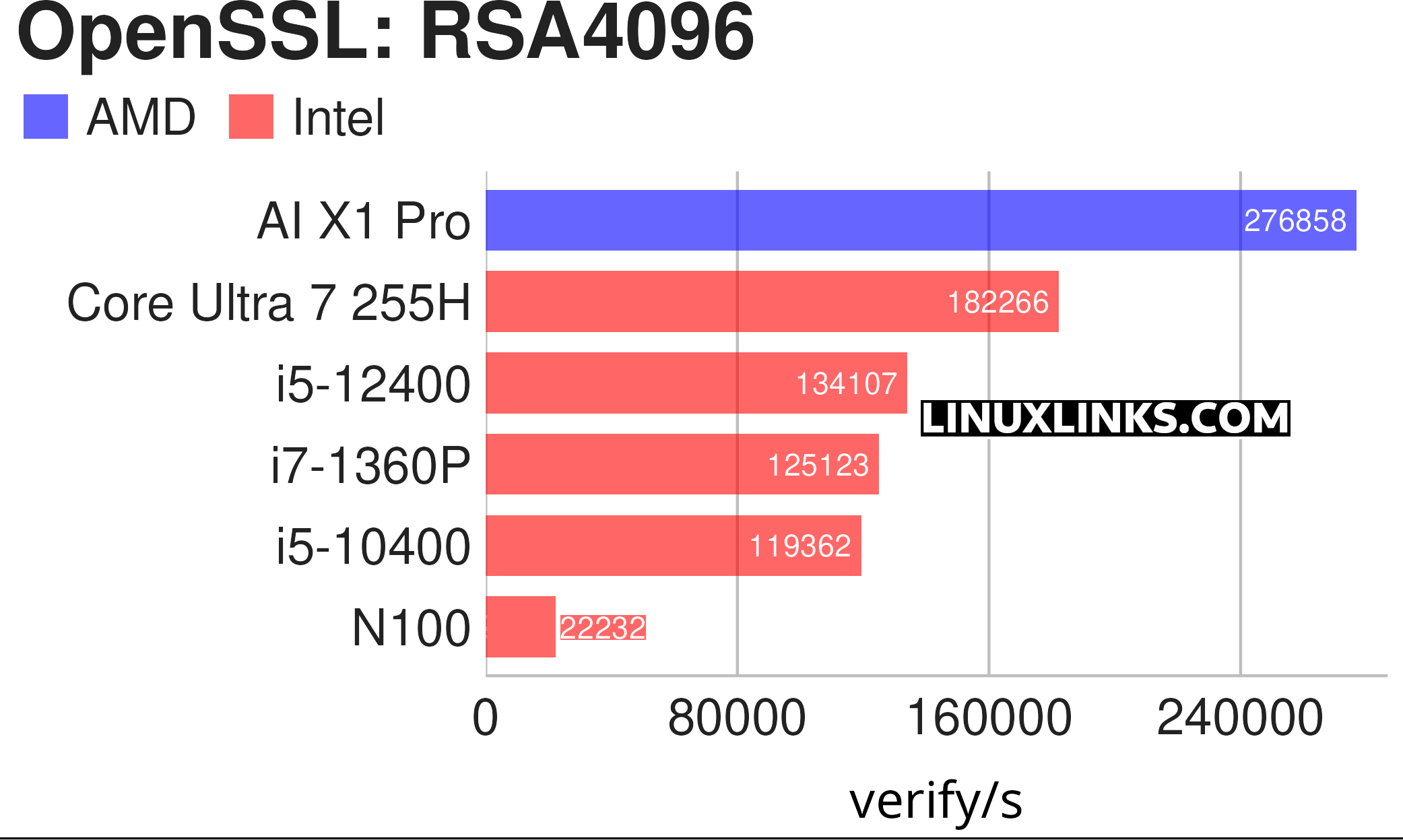
$ phoronix-test-suite benchmark openssl
OpenSSL is an open-source toolkit that implements SSL (Secure Sockets Layer) and TLS (Transport Layer Security) protocols. This test profile makes use of the built-in “openssl speed” benchmarking capabilities.
There are many different algorithms available for this benchmark. I’ve tested with the RSA4096 algorithm, as it’s representative for the others. There are two charts for this benchmark, one for the sign/s and one for the verify/s.
The performance difference between the Minisforum machine and the other machines is phenomenal particularly with the sign/s benchmark. The N100 is so slow in comparison its benchmark score had to be manually manipulated in the chart.
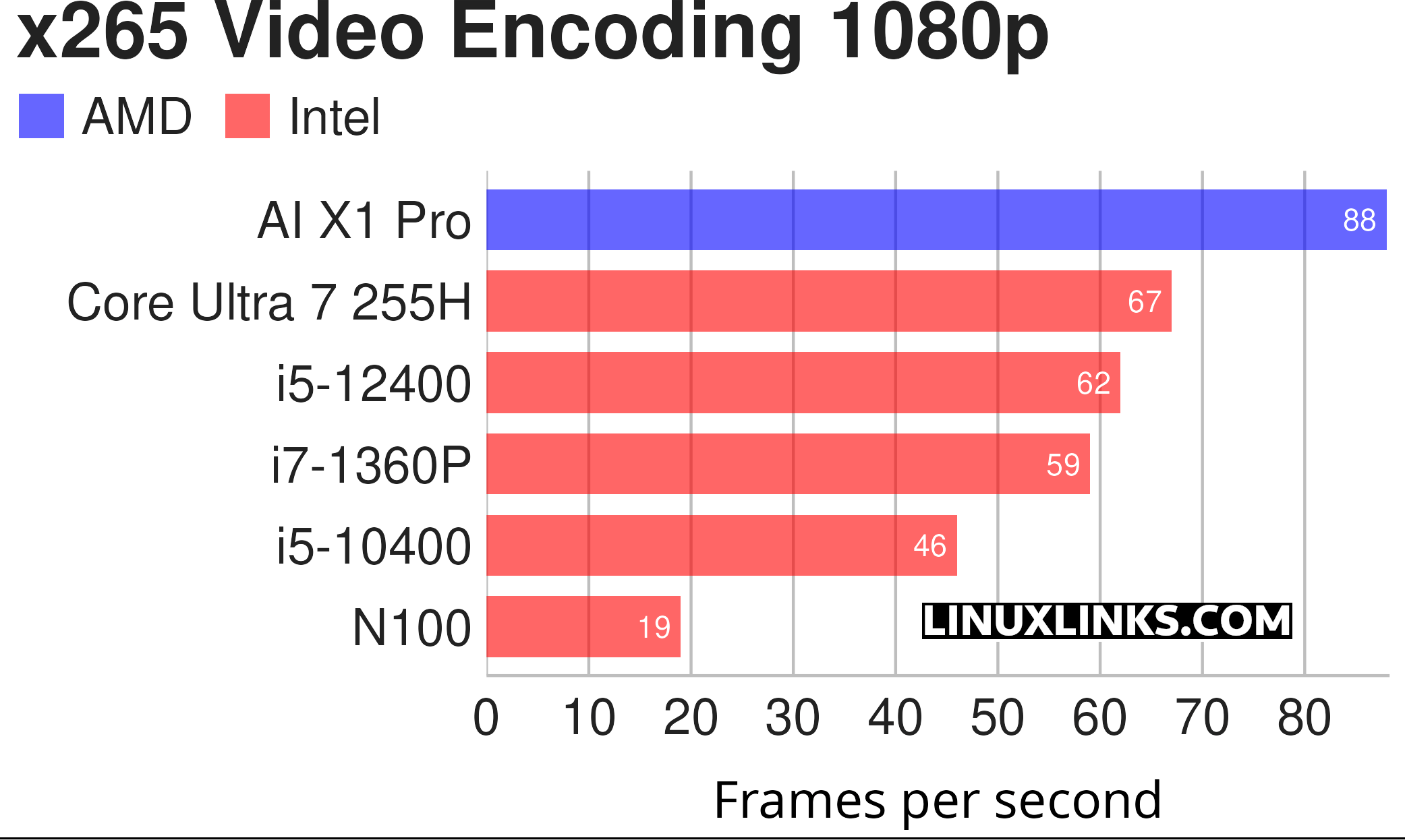
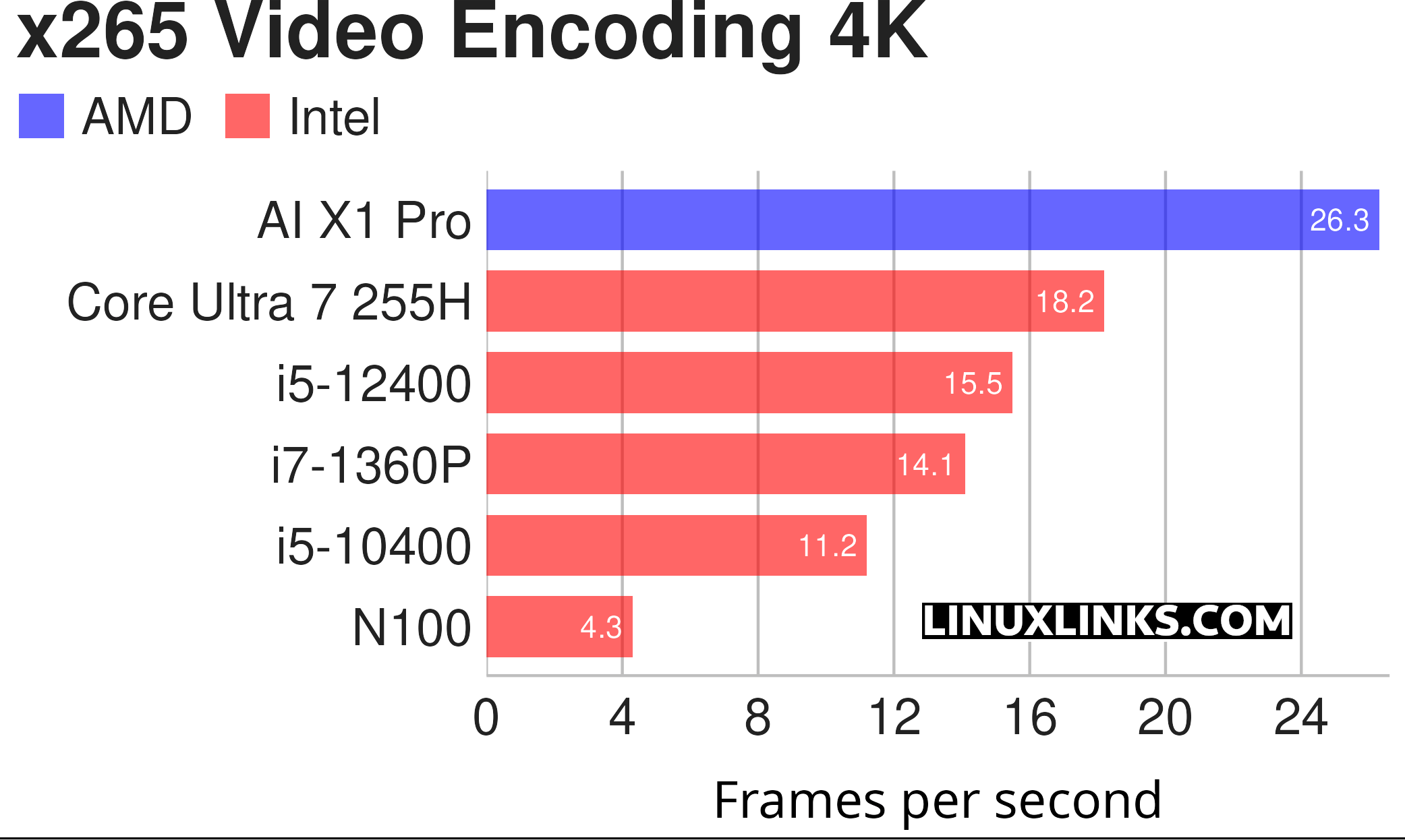
$ phoronix-test-suite benchmark x265
This is a simple test of the x265 encoder run on the CPU with a sample 1080p video file. This test only uses the CPU not the GPU.
Another impressive result for the Minisforum machine.

$ phoronix-test-suite benchmark coremark
Coremark is a benchmark that measures the performance of central processing units (CPU) used in embedded systems.
Again the AMD processor blows away the other processors in this test.
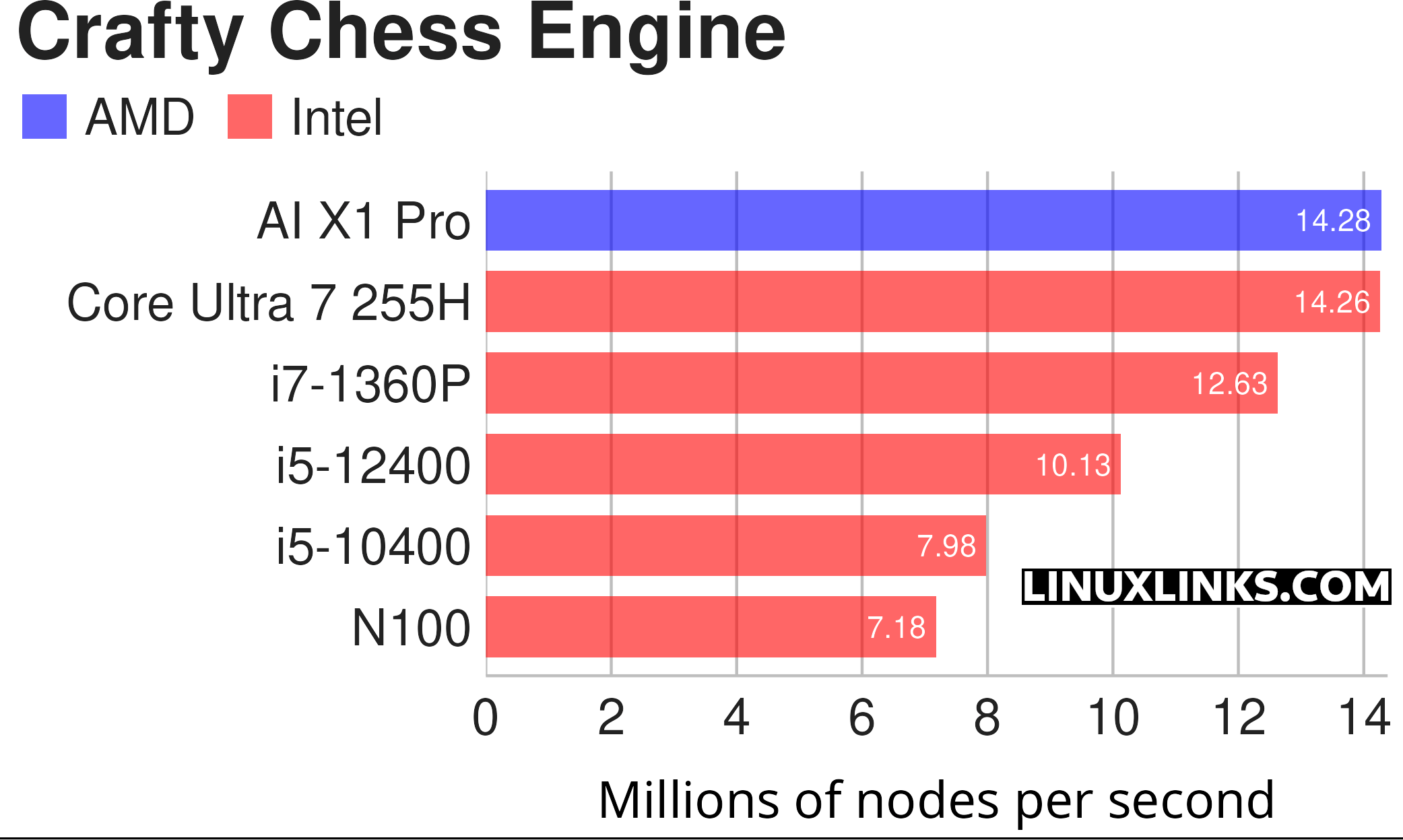
$ phoronix-test-suite benchmark crafty
Crafty is a chess program directly derived from Cray Blitz, winner of the 1983 and 1986 World Computer Chess Championships.
This is a benchmark looking at the CPU’s performance through a chess benchmark. This benchmark only uses a single core.
One thing you may have read on other sites is that the Core Ultra 7 255H’s single core performance is consistently slightly better than the AMD Ryzen AI 9 HX 370. This is not borne out by this benchmark. Here the two are neck-and-neck.
I’m always impressed how well the N100 CPU fares in this benchmark.
Pages in this article:
Page 1 – Introduction / Processor
Page 2 – Graphics
Page 3 – Memory
Page 4 – Disk
Complete list of articles in this series:
| Minisforum AI X1 Pro | |
|---|---|
| Introduction | Introduction to the series and interrogation of the machine |
| Benchmarks | Benchmarking the Minisforum AI X1 Pro |
| Power | Testing and comparing the power consumption |
| Jan | ChatGPT without privacy concerns |
| ComfyUI | Generate video, images, 3D, audio with AI |
| AMD Ryzen AI 9 HX 370 Cores | Primary (Zen 5) and Secondary Cores (Zen 5c) |
| Gerbil | Run large language models locally |
| Neural Processing Unit (NPU) | Introduction |
| Gaia | Run LLM Agents |
| Noise | Comparing the machine's noise with other mini PCs |
| Bluetooth | Fixing Bluetooth when dual-booting |

Thanks for this article, very interesting results!!
Are you running stock Ubuntu 24.04 kernel, or did you upgrade the kernel due to the bluetooth issue?
The benchmarks were run using the 6.17.0rc kernel.